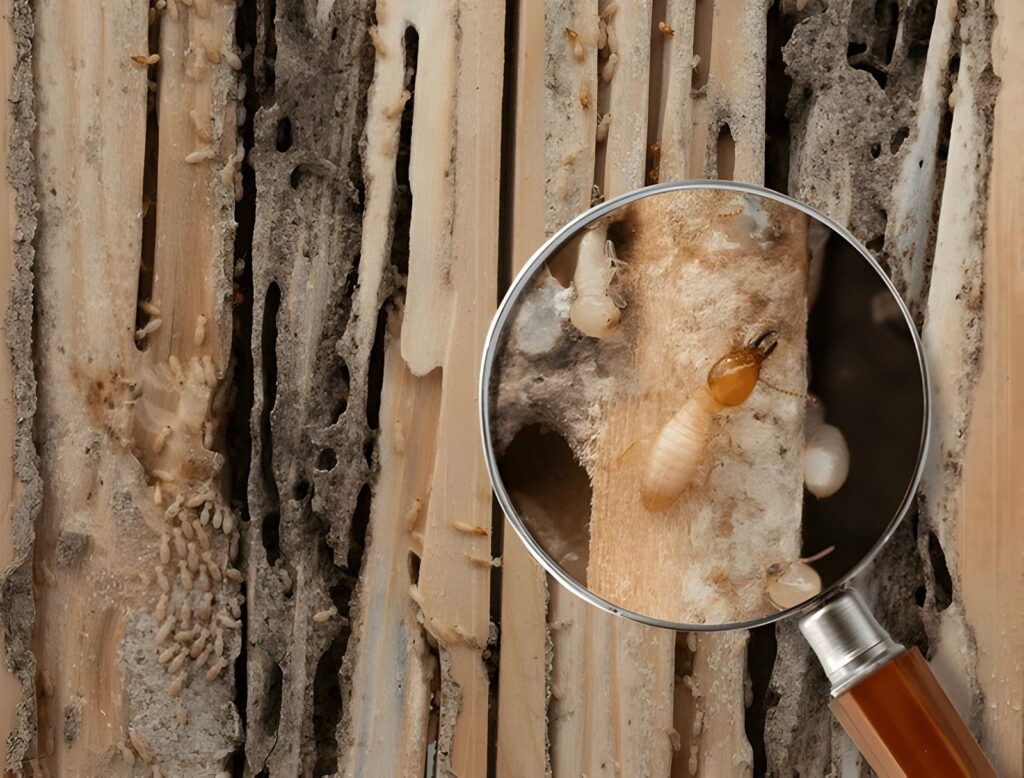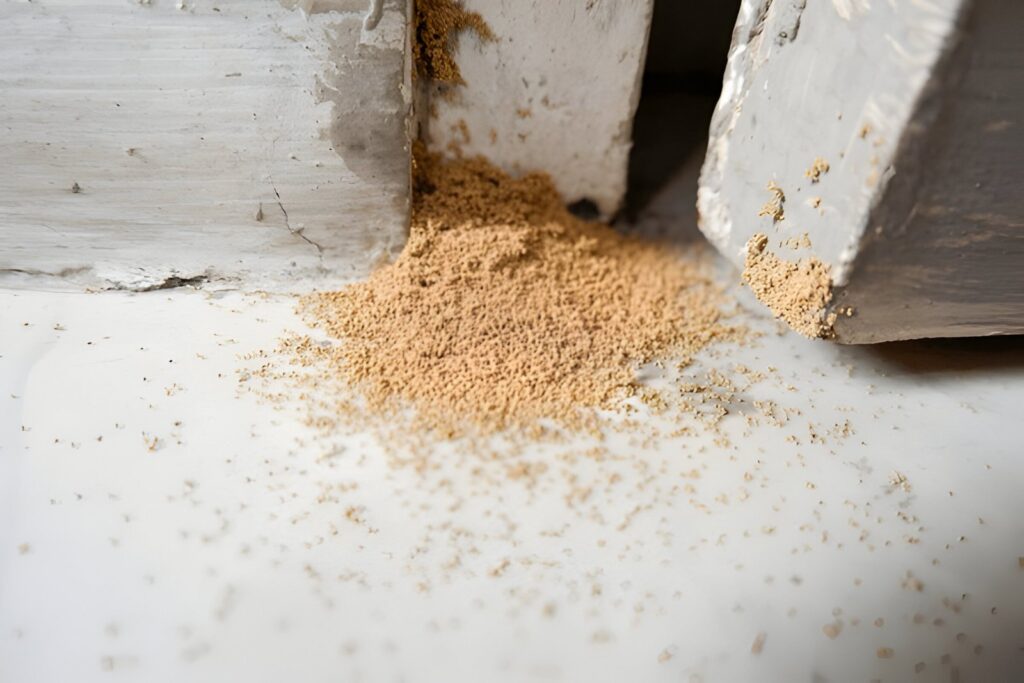Drywood termites are silent destroyers, often causing extensive damage to homes before they’re even detected. One of the earliest and most telltale signs of a drywood termite infestation is their droppings, also known as frass. But what exactly are drywood termite droppings? In this guide, we’ll explore what these droppings look like, why they’re a red flag, the risks associated with an infestation, and, most importantly, how to prevent these destructive pests from damaging your property.
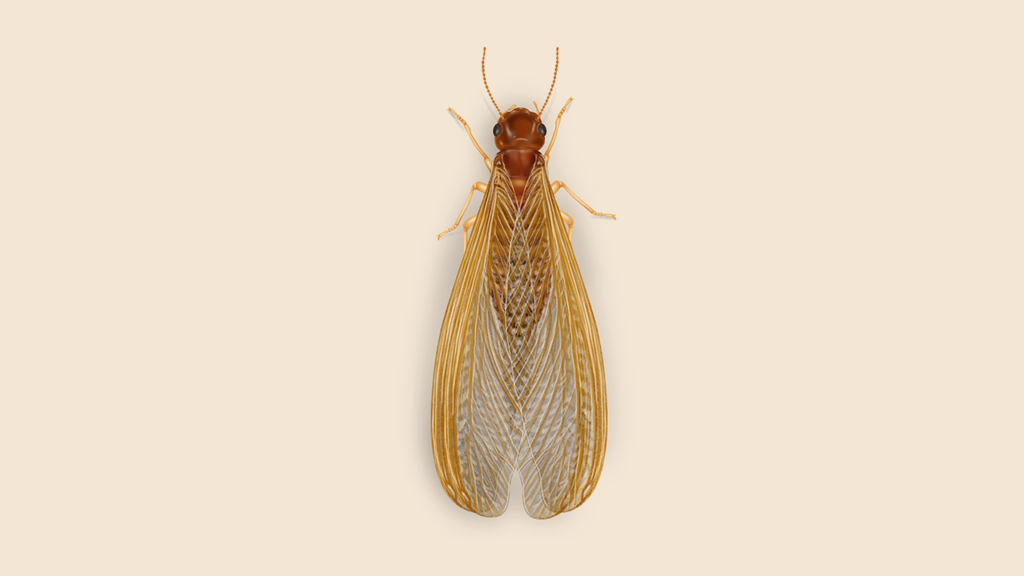
What Are Drywood Termite Droppings?
Drywood termite droppings, commonly referred to as “frass,” are small, pellet-like substances expelled by drywood termites as they consume wood. Unlike other termites that thrive in moist environments, drywood termites live inside the wood they infest, leaving behind distinctive droppings as they burrow.
Each pellet is tiny, about the size of a grain of sand, and has a hexagonal shape. Typically, the droppings are found near small holes on wooden surfaces or piled up in corners of the area where termites are active.
Key characteristics of drywood termite droppings:
- Hard and pellet-like
- Often light brown, cream, or dark brown, depending on the type of wood consumed
- Hexagonal in shape, with ridges for easy identification
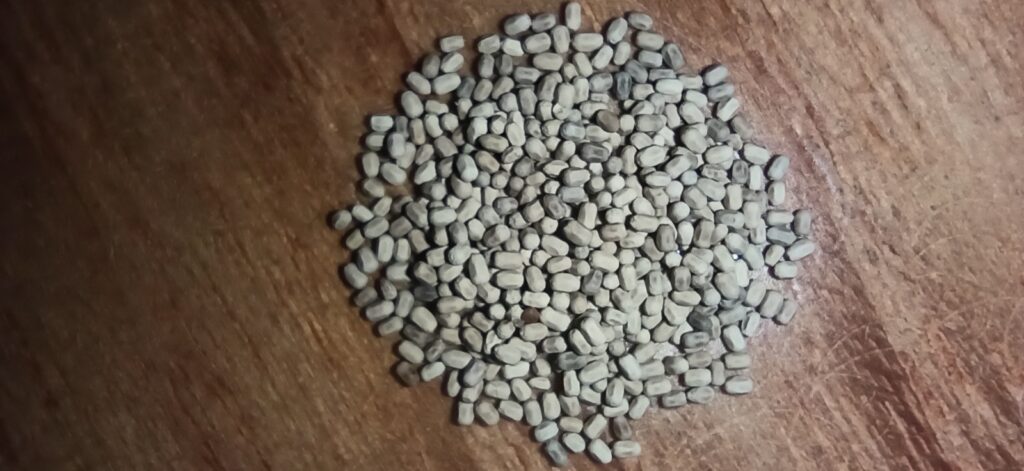
Signs of Drywood Termite Infestation
Detecting drywood termites early can help prevent severe structural damage. Here are common signs to watch for in your home:
1. Presence of Droppings or Frass
Drywood termite droppings can pile up in small mounds, especially near window sills, door frames, and baseboards. Spotting these droppings is often the first indicator of a termite problem.
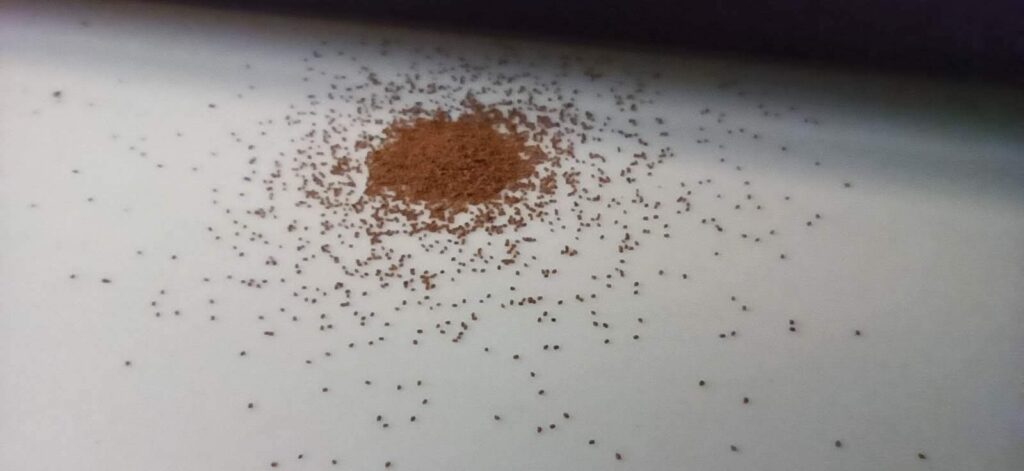
2. Small Kick-Out Holes in Wood
Drywood termites create small, pin-sized holes in wood surfaces to expel their droppings. These holes are often difficult to notice but become evident when droppings accumulate nearby.
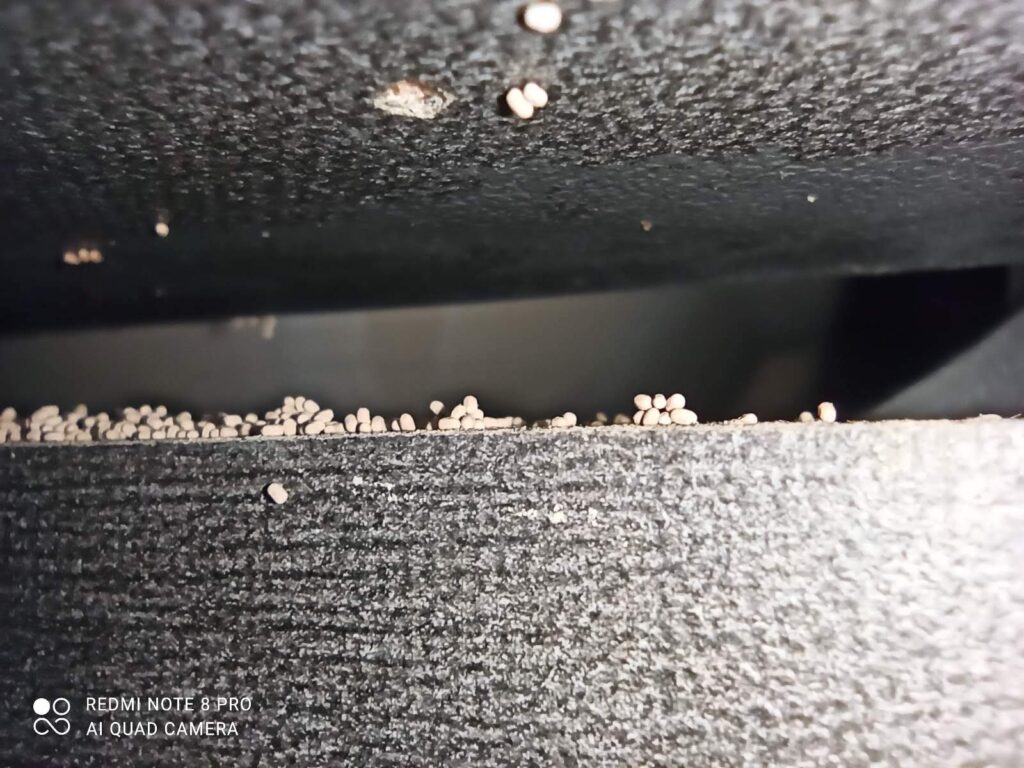
3. Visible Damage to Wood
Unlike subterranean termites, drywood termites don’t create mud tubes. Instead, they hollow out the wood from within, leaving a thin outer layer. Damaged wood may sound hollow when tapped and can break easily when force is applied.
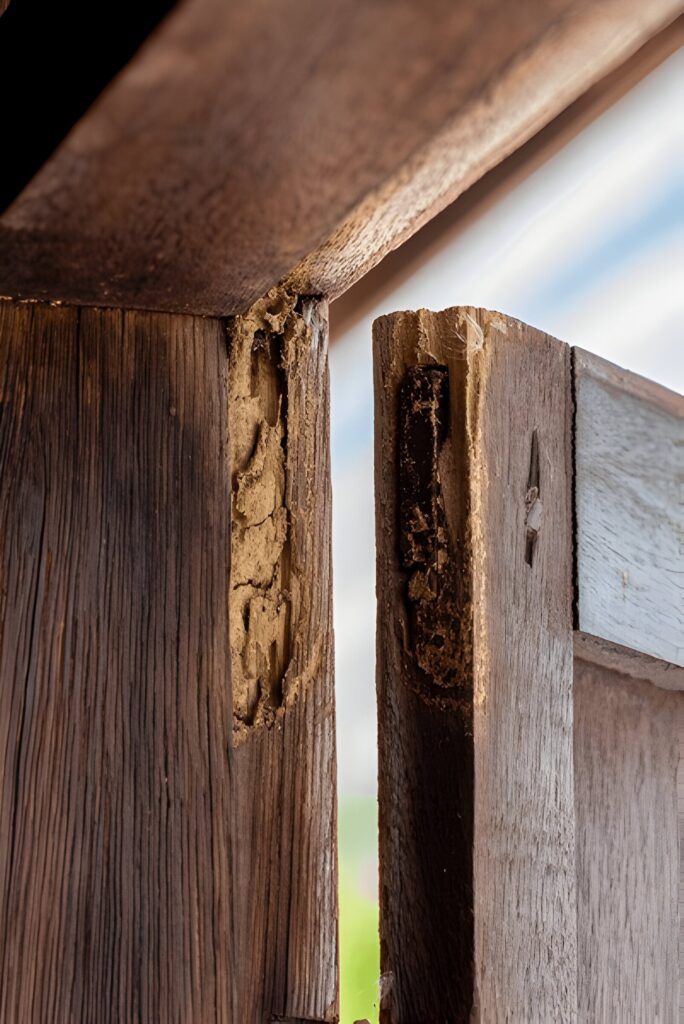
4. Discarded Wings
During swarming season, drywood termites shed their wings near windows, doors, and other light sources. The presence of these wings can indicate that termites are establishing a new colony within your property.
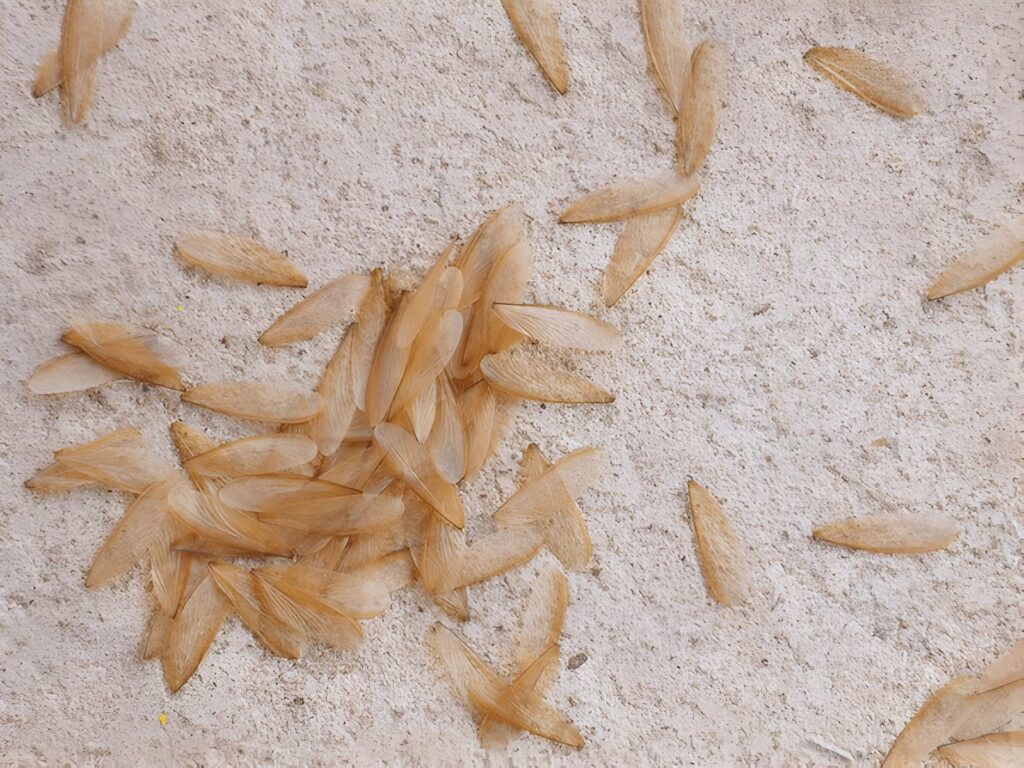
Risks of Drywood Termite Infestation
A drywood termite infestation poses significant risks to homeowners. Without timely intervention, these pests can weaken the structural integrity of your property, causing costly repairs. Here’s why you shouldn’t ignore drywood termite droppings:
1. Structural Damage
Over time, drywood termites can compromise the strength of beams, flooring, and other wooden structures. Severe infestations can lead to sagging floors, cracked walls, and even dangerous structural weaknesses.
2. Health Concerns
While drywood termites are not directly harmful to humans, their droppings can cause allergic reactions in some individuals. The accumulation of termite dust may also worsen respiratory issues for people with asthma or allergies.
3. Decreased Property Value
A property with termite damage can lose significant market value. Even if termites are treated, visible damage to wooden fixtures or structures can discourage potential buyers.
Prevention of Drywood Termite Infestation
Preventing drywood termites from entering your home is the best way to avoid the damage they can cause. Here are some effective prevention strategies:
1. Regular Inspections
Schedule regular termite inspections with a pest control professional, especially if you live in an area prone to termite infestations. Early detection allows for prompt treatment and minimizes potential damage.
2. Seal Cracks and Holes
Drywood termites can enter through even the smallest openings. Seal any cracks in your home’s foundation, walls, and roofing. Pay special attention to areas where wood meets soil, as these are common entry points.
3. Use Treated Wood
If you’re building or renovating, consider using pressure-treated wood, which is less attractive to termites. Additionally, certain termite-resistant treatments can be applied to existing wood to deter termites.
4. Reduce Wood-to-Soil Contact
Avoid having wooden structures, such as decking or wooden posts, in direct contact with soil. Use concrete or metal barriers between the ground and any wooden parts of your home to reduce the likelihood of termite entry.
5. Keep Your Home Dry
Although drywood termites can survive with low moisture, damp wood can still attract termites. Fix any leaks and maintain good ventilation in attics, basements, and crawl spaces.
Conclusion
Drywood termite droppings may seem like a small sign, but they indicate a larger problem lurking within your walls. Recognizing frass, understanding the risks of an infestation, and implementing preventive measures can protect your home from significant damage. If you suspect a drywood termite presence, don’t hesitate to contact a professional pest control service to conduct a thorough inspection and suggest effective treatment options.
By staying vigilant and informed, you can keep your home safe from these destructive pests and enjoy peace of mind.

